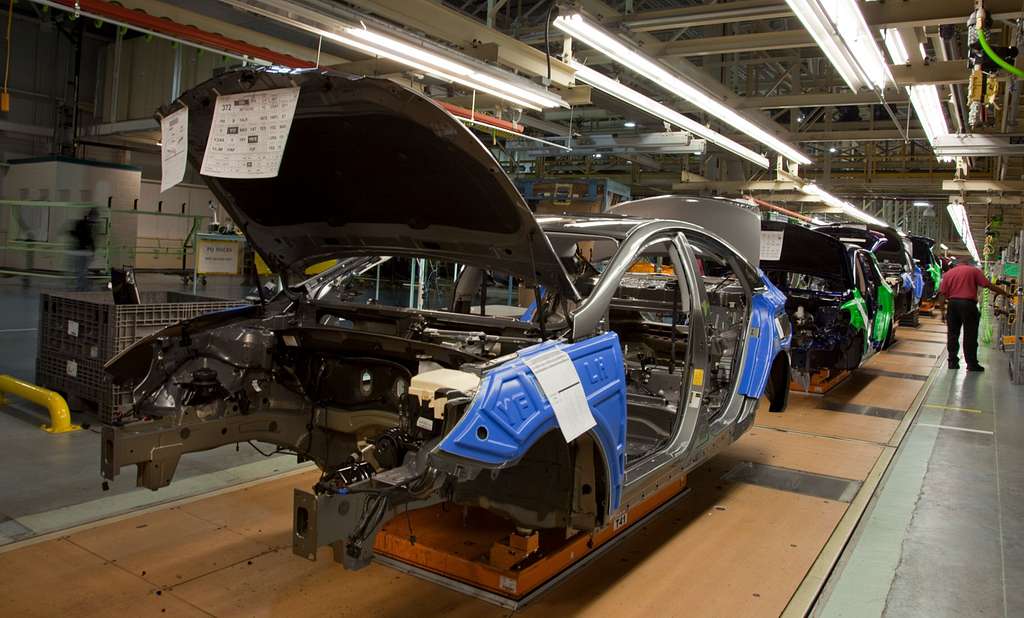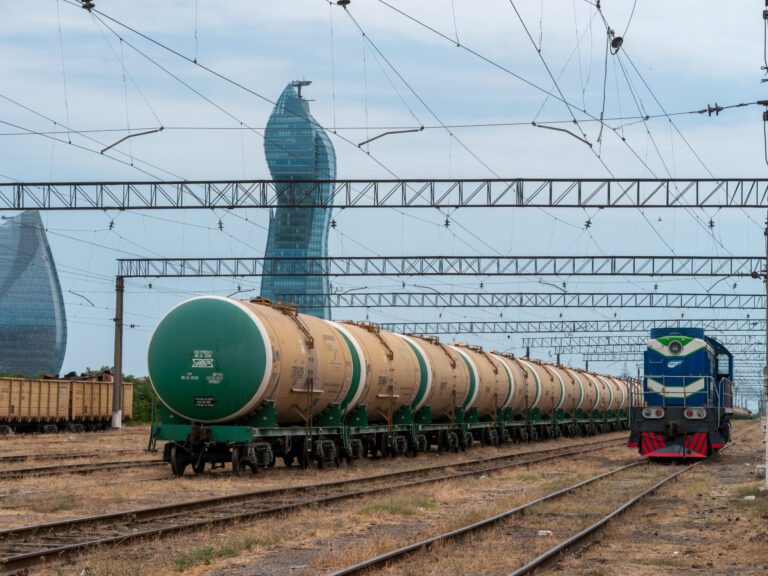
This article is based on the policy brief “Electric Shock: The Chinese Threat to Europe’s Industrial Heartland” by Jakub Jakóbowski and Janka Oertel, published by the European Council on Foreign Relations in May 2025.
The automotive sector is not just vital to Europe’s broader economy – it is integral to its identity, innovation capacity, and green transition ambitions. Yet beneath this success lies a growing challenge. The second “China shock” is reshaping the global automotive industry, threatening to relegate Europe’s industrial base to a peripheral role in a value chain increasingly dominated by China.
The “Central European industrial heartland” is in a particularly vulnerable position. Automotive plants across the Central and Eastern European region do more than just assemble cars; they support an economic model that has transformed post-communist countries into manufacturing powerhouses. Today, this very model faces an unprecedented threat.
From Success Story to Survival Mode
The numbers alone should keep policymakers up at night. In the Czech Republic, the automotive industry accounts for 9 percent of GDP and 26 percent of industrial output, with over one-third of all Czech exports going to Germany. In Slovakia, the car sector generates 9.2 percent of GDP and nearly half of all industrial production, with 43.4 percent of Slovak exports to Germany being automotive-related.
This interdependence reflects a deeply integrated economic network that emerged after the 1990s, as German manufacturers sought cost-effective, skilled labor. The result has been transformative: in 2023, bilateral trade between Germany and Central and Eastern Europe totaled USD 522 billion, surpassing that of any single individual German trade partner.
Crucially, this was not a simple hub-and-spoke arrangement. Components crossed borders multiple times. A car part could be designed in Stuttgart, manufactured in Poland, assembled in Slovakia, and sold in China – all within a seamless, transnational production system. This level of integration enabled both German and Central European manufacturers not only to survive, but to thrive during the first China shock of the early 2000s that was brought about by China’s accession to the WTO in 2001.
The Second China Shock: From Partnership to Predation
The current shock is different – and more dangerous. While the first China shock involved an influx of cheap consumer goods into global markets, this time around, Chinese products are competing directly with Germany’s core industrial sectors. If current trends continue, they could erode the very foundation of Germany’s industrial strength – particularly its automotive industry. Since 2019, German carmakers have produced more vehicles in China than in Germany. Companies like Volkswagen, once symbols of German engineering prowess, are now deeply embedded within China’s industrial ecosystem.
This shift is unfolding alongside China’s massive expansion in electric vehicle capacity. By the end of 2025, China is expected to produce 25 million new energy vehicles (NEVs) annually – far exceeding domestic demand. For comparison, Germany produces approximately 4 million cars per year (including both NEVs and internal combustion vehicles), Japan 8 million, and the US 10 million. The implications are staggering: China’s EV output will soon surpass the total passenger vehicle production of the next three industrial powers combined.
When the Center Cannot Hold
For policymakers in Prague, Warsaw, and Bratislava, the warning signs are clear. Between 2020 and mid-2024, the market share of foreign car manufacturers in China fell from 53 percent to 33 percent, with German brands among the hardest hit. In just one year, the share of German cars sold in China declined from 20.4 percent in 2023 to 17.6 percent in 2024.
As German companies lose market share in China, they face a difficult choice: either relocate more production to China to remain competitive, or risk ceding the European market to Chinese competitors. Both scenarios pose serious threats to the Central European industrial network, which depends heavily on German success.
This threat manifests in two distinct ways. The first is what researchers call “heartland atrophy” – a scenario in which the European automotive industry suffers the same fate as its solar sector, decimated by state-backed Chinese competition. Factories shut down, suppliers vanish, and entire communities built around automotive manufacturing face economic collapse.
The second scenario is equally troubling. Under so-called “Sinicization,” Chinese companies acquire existing Central European industrial assets or establish their own in the region. But instead of integrating into the existing value chain, these facilities prioritize Chinese components, technology, and personnel, contributing little to local development.
Different countries are already taking divergent paths. Hungary has positioned itself as China’s European bridgehead, hosting a major BYD EV plant and actively courting Chinese investment – often at the expense of regulatory standards. Slovakia, facing similar pressures, is following suit. In late 2024, Prime Minister Róbert Fico welcomed €1.4 billion investment by Chinese battery producer Gotion High-Tech, calling it “a turning point” in China-Slovakia relations.
Poland, by contrast, has opted for a hedging strategy – engaging with Chinese partners through joint ventures while also supporting EU tariffs on Chinese EVs to protect local value chains. Yet without coordination at the EU level, these national approaches risk devolving into a patchwork of competing interests – undermining Europe’s strategic coherence and bargaining power.
Beyond Competitiveness: Building the Heartland Economic Zone
The EU’s traditional emphasis on “competitiveness” through increased research spending and regulatory reform is no longer sufficient. Europe is not merely competing with Chinese companies; it is confronting the strategic ambitions of the Chinese Communist Party, backed by the full weight of the world’s second-largest economy.
To respond effectively, the EU must move from a focus on company-level competitiveness to system-level competitiveness. This entails treating the single market – and the industrial base it sustains – as a unified system. Fragmentation among member states undermines Europe’s ability to respond to non-market competition and state-driven industrial strategies from China.
The solution is not to retreat from global markets, but to reinforce existing industrial clusters while remaining open to fair competition. The EU must strengthen its trade policy by maintaining – or even increasing – tariffs on Chinese electric vehicles, and potentially extending them to other types of cars and automotive components. However, tariffs alone won’t solve the problem.
One of the most forward-looking proposals is the creation of a “heartland economic zone” – a cross-border special economic area in Central Europe aimed at strengthening existing industrial network and fostering EU-wide innovation and system competitiveness.
This is not protectionism in disguise. The zone would be non-discriminatory and open to all companies – including Chinese firms – willing to comply with transparent rules, local value creation requirements, and EU standards on labor rights, environmental protection, data security, and technology transfer. Key features of this zone would include coordinated industrial policy among participating states, harmonized labor and environmental standards, conditional support for foreign direct investment based on meaningful local value creation, and joint research and development initiatives that strengthen the entire network, rather than benefiting individual firms alone.
The Detroit Warning
The consequences of inaction are stark. If the automotive industry collapses in Central and Eastern Europe due to decisions made particularly in Berlin, the fallout will extend far beyond economic loss. It will erode trust in European integration, fuel political resentment, and empower populist movements in places already strained by accelerating deindustrialization.
The warning signs echo Detroit’s industrial decline. Once a global symbol of industrial strength and innovation, the city now stands as a cautionary tale of what happens when policy fails to adapt to shifting global dynamics. Europe must act now to avoid its own “Detroit moment.”
The Central European industrial heartland was built once before – through vision, determination, and cross-border cooperation. It can be rebuilt through those same qualities. But success will depend on a critical realization: the rules of the game have changed, and the old playbook no longer works against a rival that plays by fundamentally different rules.
The choice is stark: either adapt quickly to the new reality of systemic competition or risk watching Europe’s most successful industrial cluster become the next casualty of the second China shock. If Europe continues to focus narrowly on competitiveness of individual companies or even industries, it will fall behind. If it shifts toward system-level thinking – recognizing the need for coordinated, strategic action – it has a chance not only to survive, but to lead.
Every morning, factory workers across Central Europe clock in – not just to assemble cars, but to build the future of European industry. The question now is: will that future be made in Europe, or merely assembled here from parts made elsewhere?
Written by
Jakub Jakóbowski
J_JakobowskiJakub Jakóbowski is the Coordinator of the Connectivity in Eurasia project, as well as a Senior Fellow at the China Programme at the Centre for Eastern Studies (OSW), a public think-tank based in Warsaw.
Janka Oertel
Dr Janka Oertel is director of the Asia programme and a senior policy fellow at the European Council on Foreign Relations.


